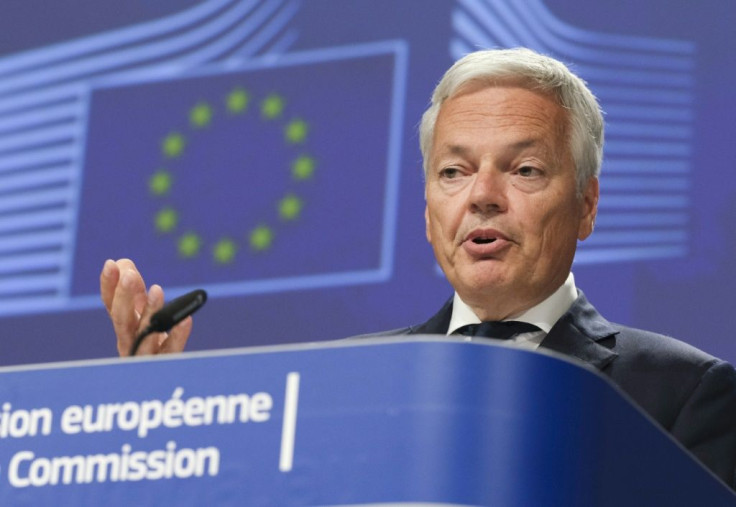EU Racism Pledge Clouded By 'Blackface' Controversy
A pledge by the EU to make its 30,000 strong civil service more diverse was overshadowed on Wednesday by the blackface-wearing past of its top justice official.
The European Commission, the EU's executive arm, wants more diversity amongst its ranks after the Black Lives Matters protests that spread from the United States to Europe raised awareness of racism.
The EU is seeking ways to "increase diversity" in the commission's staff, EU vice-president Vera Jourova said, after a weekly meeting of the body's all-white cabinet.
"According to many surveys... we see that racism appears as a big barrier for many people in Europe in relation to housing, in relation to education, in relation to public services," she added.
Jourova was speaking alongside EU Justice Commissioner Didier Reynders who, during the same press conference, was forced to answer questions about appearing in blackface on the streets of Brussels.
Reynders is a former Belgian foreign minister who in 2015 cheerfully spoke to the media wearing a white top hat and with his face painted black as he participated in an annual fundraising jaunt.
The news report caused an international uproar, but mostly caught Belgium by surprise.
At the time Reynders said that he took part with "goodwill and good humour" and that the group -- known as the "Les Noirauds" (or Blackies) -- should not be seen as racist, though he later apologised.
Asked about the incident by reporters on Wednesday, he referred to his previous explanations and said that the controversy had allowed the charity in question to "evolve".

Modifying a tradition that dates back to 1870s, Reynders said that members now wore the three national colours of Belgium -- black, yellow and red -- instead of just black.
The Reynders row echoes unease in the neighbouring Netherlands over "Black Pete" -- the jolly sidekick of Saint Nicholas who traditionally dresses in a gaudy medieval costume, blackened face, red lips and an afro wig.
Asked whether Belgium and other member states should wholly give up such traditions, Renders said:
"It's maybe a good change if it's possible to change all these kinds of behaviours in the EU and outside the EU," he said.
Reynders was also asked to comment on the calls to remove statues in Belgium of King Leopold II, the towering figure of Belgium's violent colonial history.
Under Leopold's rule, the Congo was ruthlessly exploited for natural resources and became the site of some of the worst atrocities of the colonial age.
"You mentioned the request to remove some statues or to change some names of streets and I'm not sure that it's the best way," Reynders said.
"The best way is not to try to have a newer version of the historical past... it is more to insist on research and debate and analyse all the memories," he added.
© Copyright AFP 2024. All rights reserved.











